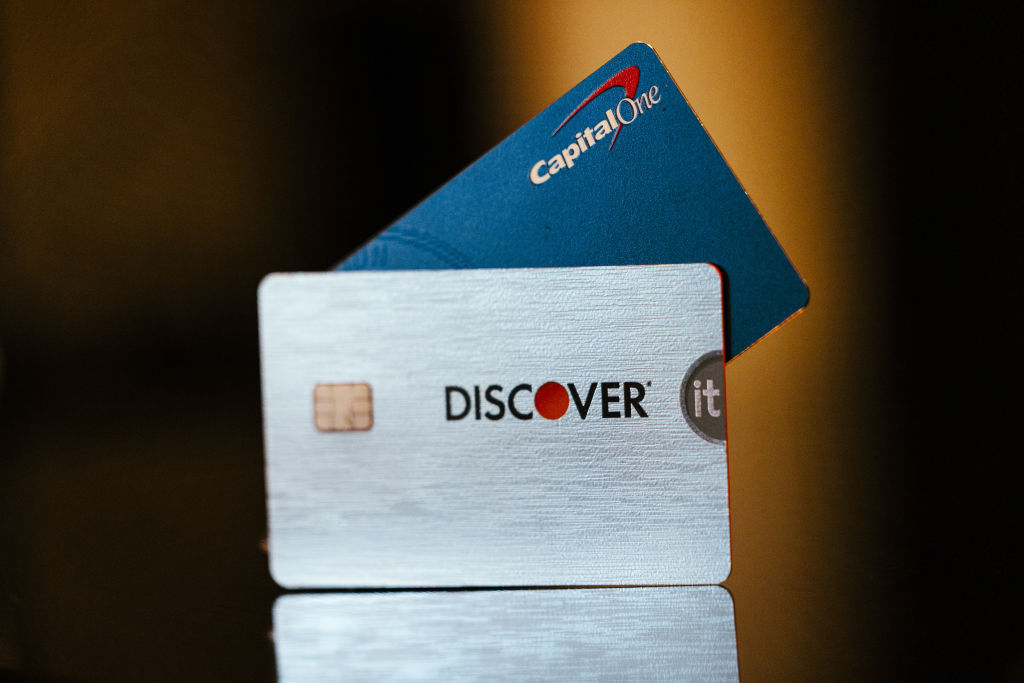Student Loan Lessons from Martin O’Malley
The Democratic presidential candidate borrowed heavily to send his daughters to college. We think there's a better way.

With college tuition and student borrowing -- along with enrollment -- on the rise, the affordability of a college education will be an issue for young adults and parents alike in the 2016 elections. Earlier this month, Democratic presidential hopeful Martin O’Malley, former governor of Maryland, outlined his proposal to help students who attend an in-state public four-year college graduate debt-free by increasing Pell grants, automatically enrolling borrowers in income-based repayment plans and helping borrowers refinance their loans at lower interest rates.
Take Our Quiz: Valuable Lessons on Getting, Repaying Student Loans
But hold on. Alongside his proposal, O’Malley shared his family’s own student debt story, revealing that he and his wife, Katie, a Baltimore judge, took out nine parent PLUS loans (federal loans taken by parents or graduate students), totaling more than $339,200, to educate their daughter Grace at Georgetown University and daughter Tara at the College of Charleston.
Whoa! Although most students borrow to finance their education -- to the tune of an average $27,300 per borrower for the class of 2013 -- bulking up on loans the way the O’Malleys did is rarely a smart financial decision. The country’s $1.2 trillion student debt problem shows that the O’Malleys are far from the only family with student debt. But relatively few are in as deep as this couple. In the last quarter of 2014, only 4.2% of student loan borrowers had balances of $100,000 or more, according to the New York Federal Reserve.

Sign up for Kiplinger’s Free E-Newsletters
Profit and prosper with the best of expert advice on investing, taxes, retirement, personal finance and more - straight to your e-mail.
Profit and prosper with the best of expert advice - straight to your e-mail.
Haley Morris, an O'Malley campaign spokesperson, said: "This was a family decision to take on this debt and make this sacrifice for their daughters' education and future, and that’s something they will decide again as a family for their sons." She adds: "It’s clear that the governor and his family value education and made that a priority, and I think that’s something they share with a lot of families.”
At Kiplinger, we believe that the O’Malley approach is no way to go, especially because they still have two younger sons who may also want to go to college. Sure, there are some high-paying professions, such as doctors and lawyers, where earning degrees costs huge sums of money up front. But piling up an enormous student loan debt without a credible plan to pay it back can put you in the red for a lifetime.
Here are five lessons student borrowers and their families can learn from O’Malley’s experience with student debt.
1. Start the discussion early. Kiplinger editor Janet Bodnar recommends that as children near the beginning of their college search, you talk with them about the cost of their options. One important distinction to make: the difference between your state’s public school and private or out-of-state options. In 2014-15, the average sticker price for an in-state four-year public institution was $18,943. Meanwhile, the average sticker price for a four-year private nonprofit college or university was $42,419 a year.
Private is not synonymous with quality. For example, the in-state cost of attendance at the University of North Carolina at Chapel Hill (number 22 in our combined rankings of best college values) is $20,412. About 10 miles away, Duke University (number 10 in our combined rankings) charges an annual sticker price of $61,878. You’ll want to share with your children how you’ve been saving for the expense, what portion of it you’re hoping to cover -- and what you’ll expect them to contribute.
Perhaps your family plans to contribute a certain dollar amount for each child, or maybe you’re planning to save enough to cover in-state tuition at a public school. You’ll need to help your child understand that attending school out of state or at a private school means he will need to make up the difference with scholarships, loans or his own earnings. And no matter what level of financial support you’re able to offer your kids, it’s smart for your students to have some skin in the game, taking some financial responsibility for their education.
2. Know your options. Before casting a wide net for your family’s college search, familiarize yourself with options closer to home, including in-state public universities, community colleges and even certificate or apprenticeship programs (see our story 4 Alternatives to a Four-Year College Degree). Depending on what your child plans to study, or the offerings of your state’s public university system, you may find an affordable option close to home. Some states and cities also offer programs to pick up the tab for some students (see our story Free Community College for All?).
When O’Malley was governor of Maryland, he froze tuition at state universities for four years in an effort to keep the cost of a higher education affordable. His children could have graduated from the University of Maryland, College Park for less than $100,000 each (without scholarships or financial aid). Yet as his daughters entered college, they enrolled at Georgetown University and the College of Charleston, where the cost of attendance for four years rings in at roughly $270,000 and $160,000 (for non-residents of South Carolina), respectively. “For us, this is what the American Dream is all about -- working hard and making sacrifices so our kids can pursue bigger opportunities and do better than we did,” says O’Malley. But there are plenty of ways to help your children attend college and achieve their dreams that don’t require taking on a mountain of debt (see our story Why Elite Colleges Don't Guarantee Success).
3. File the FAFSA and apply for scholarships. Even if you don’t expect to qualify, you should still fill out the Free Application for Federal Student Aid (FAFSA). The form is the starting point for all financial aid, not just that offered by the federal government. Many states, schools and scholarships also use the FAFSA to award financial aid. You may be surprised to discover that your family does qualify for federal aid. Plus, filing the FASFA opens the door for your student to receive other funds from the state or the school.
[page break]
Scholarships can also help ease the strain of paying for college. During the 2011-12 school year, the most recent data available from the National Postsecondary Student Aid Study, $6.2 billion in private scholarships was awarded to more than 1.8 million undergraduate students. The application requirements and the awards themselves vary, but there’s an abundance of online tools to help you track down scholarship options for your student (see our slide show 8 Top Sources of College Scholarships).
4. Keep your borrowing in check. As you’re crunching the numbers before the first tuition check, be sure to do a little back-of-the-envelope math to make sure your student will be able to afford to repay his loans after graduation. One long-standing rule of thumb is that students should avoid borrowing more than their anticipated annual salary after graduation (see our story How Much Student Debt Is Too Much?).
Before taking on any student debt, take a look at what your child’s intended course of study may translate to when it comes to dollars and cents during their first year on the job. You can go to Payscale.com to see salaries in specific fields, then use those figures as a guide to borrowing so students are more likely to be able to comfortably repay their loans later.
5. Choose the right loans. Not all debt is created equal. The financial aid letter you receive from the school, detailing any scholarships your student has received and the grants and loans the school is offering, can be overwhelming. But your strategy should be simple: Take the free money (scholarships and grants) first, and then look at loans with the best repayment terms to fill in the gap (see our story The Right Way to Borrow for College).
For most students and their families, keeping debt manageable means starting with federal government loans, such as Perkins loans, Direct subsidized loans and Direct unsubsidized loans. These federal loans usually have cheaper interest rates than private loans and offer flexible repayment plans. They also allow borrowers to postpone payment for a time if, say, the borrower is unemployed. And unlike private loans, they can be discharged if the borrower dies or becomes disabled.
The O’Malleys, however, took out nine Parent PLUS loans, with interest rates ranging from 6% to 8.5%. Unlike federal loans made to undergraduate students, PLUS loans allow parents to borrow the full cost of their child’s cost of attendance (minus any financial aid). The PLUS loan interest rate for 2015-16 is 6.84% and can be an appealing way to fill the gap between aid and loans offered to your student and the cost of education. “But if you’ve found yourself with no choice but to borrow using parent PLUS loans,” says Mark Kantrowitz, senior vice president and publisher of Edvisors.com, “it’s a warning flag that you’re overborrowing.”
Get Kiplinger Today newsletter — free
Profit and prosper with the best of Kiplinger's advice on investing, taxes, retirement, personal finance and much more. Delivered daily. Enter your email in the box and click Sign Me Up.

-
 What the Capital One Discover Merger Means for Your Wallet
What the Capital One Discover Merger Means for Your WalletThe Capital One Discover merger reshapes the credit card landscape and could impact your credit card rewards, interest rates and card perks.
By Paige Cerulli
-
 My Advice for Enrolling in Medicare Part B — Based on Experience
My Advice for Enrolling in Medicare Part B — Based on ExperienceEnrolling in Medicare is notoriously complicated and can result in penalties if you get the timing wrong. Here are some valuable tips for first-timers.
By Sandra Block
-
 Roth IRA Contribution Limits for 2025
Roth IRA Contribution Limits for 2025Roth IRAs Roth IRA contribution limits have gone up. Here's what you need to know.
By Jackie Stewart
-
 Four Tips for Renting Out Your Home on Airbnb
Four Tips for Renting Out Your Home on Airbnbreal estate Here's what you should know before listing your home on Airbnb.
By Miriam Cross
-
 Five Ways to a Cheap Last-Minute Vacation
Five Ways to a Cheap Last-Minute VacationTravel It is possible to pull off a cheap last-minute vacation. Here are some tips to make it happen.
By Vaishali Varu
-
 How to Figure Out How Much Life Insurance You Need
How to Figure Out How Much Life Insurance You Needinsurance Instead of relying on rules of thumb, you’re better off taking a systematic approach to figuring your life insurance needs.
By Kimberly Lankford
-
 Amazon Big Deal Days Is Coming! We’ve Got All the Details
Amazon Big Deal Days Is Coming! We’ve Got All the DetailsAmazon Prime To kick off the holiday season with a bang, Amazon Big Deal Days runs Tuesday, October 8 and Wednesday, October 9.
By Bob Niedt
-
 How to Shop for Life Insurance in 3 Easy Steps
How to Shop for Life Insurance in 3 Easy Stepsinsurance Shopping for life insurance? You may be able to estimate how much you need online, but that's just the start of your search.
By Kaitlin Pitsker
-
 Five Ways to Shop for a Low Mortgage Rate
Five Ways to Shop for a Low Mortgage RateBecoming a Homeowner Mortgage rates are high this year, but you can still find an affordable loan with these tips.
By Daniel Bortz
-
 Retirees, It's Not Too Late to Buy Life Insurance
Retirees, It's Not Too Late to Buy Life Insurancelife insurance Improvements in underwriting have made it easier to qualify for life insurance, which can be a useful estate-planning tool.
By David Rodeck